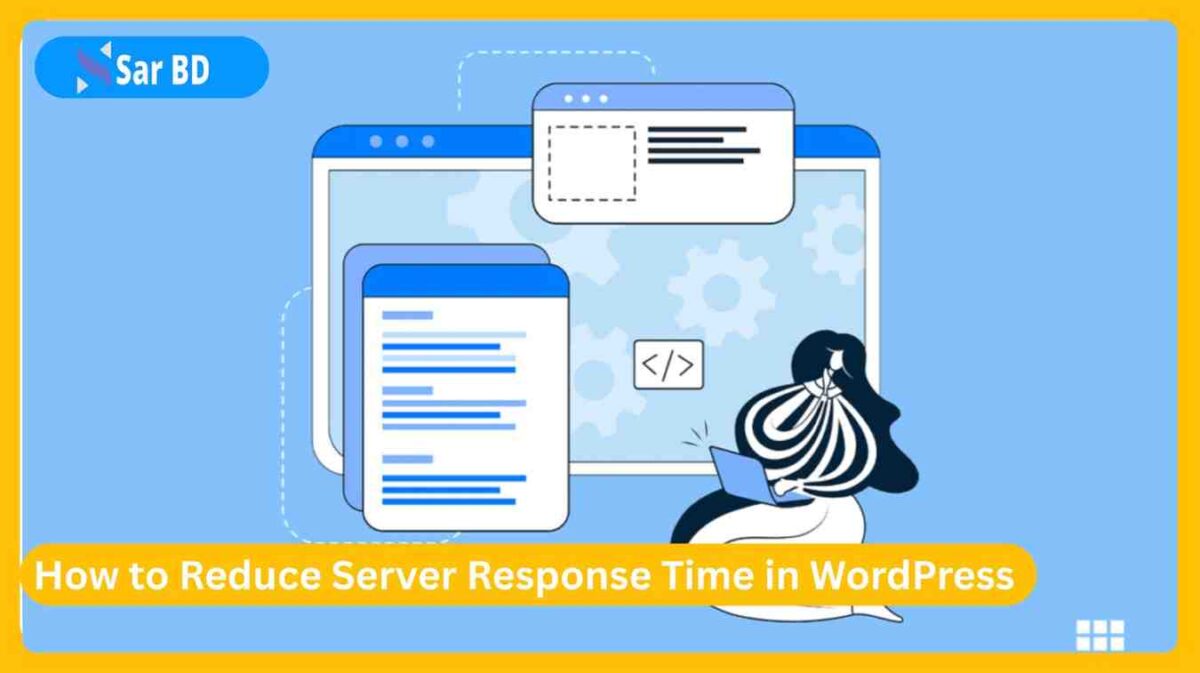How to Reduce Server Response Time in WordPress – A Complete 2025 Guide
A fast-loading website is no longer optional. With page speed being a major SEO ranking factor, every second counts. One of the most critical aspects of performance optimization is learning how to reduce server response time in WordPress. If your site’s Time to First Byte (TTFB) is too high, even the fastest caching plugin won’t help. In this detailed guide, you’ll learn actionable strategies to minimize server response time and supercharge your site’s performance.
Whether you’re running a blog, an eCommerce store, or a business website, reducing server lag helps improve user experience, SEO rankings, and overall success. Let’s dive deep into how to reduce server response time in WordPress using practical, real-world tactics.
Why You Must Reduce Server Response Time in WordPress
- Better SEO Rankings: Google uses site speed and server response time as ranking factors.
- Improved User Experience: Faster websites keep visitors engaged and reduce bounce rates.
- Higher Conversions: A faster site leads to more form submissions, sales, and leads.
- Mobile Performance: Mobile users expect lightning-fast response times.
- Less Server Strain: Optimized server response time reduces CPU and memory usage.
- Positive Brand Perception: Fast sites appear more trustworthy and professional.
- Lower Hosting Costs: A well-optimized site may require less server power.
- Essential for High-Traffic Sites: Delays are magnified when you get large traffic volumes.
These reasons make it clear why you should prioritize how to reduce server response time in WordPress today.
️ Choose a High-Performance Hosting Provider
- Your hosting service is the foundation of your WordPress site’s speed.
- Avoid shared hosting if your site has moderate to high traffic. Go for VPS, managed WordPress hosting, or cloud hosting.
- Top hosts like Kinsta, Cloudways, and SiteGround offer faster servers and server-level caching.
- Make sure your hosting provider uses SSD storage and NGINX or LiteSpeed technologies.
- Also, check if they support HTTP/2 or HTTP/3 protocols.
- Uptime and server location affect response times significantly.
- If your users are global, choose a host that supports global CDN integration.
- Changing your host is often the most effective step to reduce server response time in WordPress.
⚙️ Use a Lightweight WordPress Theme
- Bloated themes are often filled with unnecessary scripts, images, and animations.
- Choose a minimalist, performance-focused theme like Astra, GeneratePress, or Blocksy.
- Lightweight themes reduce the amount of code the server has to process.
- They also ensure faster rendering on both mobile and desktop.
- Many modern themes now follow Google’s Core Web Vitals guidelines.
- Themes that are SEO-optimized often come with fewer HTTP requests.
- Avoid themes that load dozens of plugins or heavy page builders by default.
- A cleaner theme plays a direct role in how to reduce server response time in WordPress effectively.
⚡ Implement Page and Object Caching
- Caching stores a version of your site so it doesn’t generate content dynamically every time.
- Use plugins like WP Rocket, W3 Total Cache, or LiteSpeed Cache (for LiteSpeed servers).
- Object caching stores database queries in memory, speeding up dynamic content retrieval.
- Combine caching with a CDN (Content Delivery Network) for maximum efficiency.
- Most caching plugins also allow minification and combining of CSS/JS files.
- Ensure you enable GZIP compression through your caching plugin.
- Proper caching reduces TTFB drastically.
- It’s a core technique when considering how to reduce server response time in WordPress.
Optimize Your Database Regularly
- WordPress databases get bloated with post revisions, trashed posts, and plugin remnants.
- Use plugins like WP-Optimize or Advanced Database Cleaner to schedule regular cleanups.
- You should also remove unused tables left by deactivated plugins.
- Database queries are a major factor in server response delays.
- Optimizing reduces latency and improves server processing times.
- Ensure your hosting provider offers database indexing support.
- Run a cleanup before and after major content updates.
- This optimization step helps consistently reduce server response time in WordPress.
Use a Content Delivery Network (CDN)
- A CDN stores your website’s static files on multiple servers worldwide.
- Services like Cloudflare, BunnyCDN, or KeyCDN reduce geographical latency.
- A good CDN reduces the distance between users and your content.
- Most CDNs now support image optimization, WebP conversion, and Brotli compression.
- CDNs also reduce DDoS attack risks and provide extra security.
- Integrating with your caching plugin can streamline setup.
- Choose a CDN with real-time analytics to monitor performance.
- CDNs are a must-have tool when exploring how to reduce server response time in WordPress globally.
Minimize HTTP Requests and Scripts
- Each JavaScript and CSS file triggers an HTTP request.
- Minimize and combine these files using your performance plugin.
- Defer JavaScript loading until after page render.
- Eliminate render-blocking resources with the help of PageSpeed Insights recommendations.
- Use asynchronous loading for third-party scripts like Google Analytics.
- Only load scripts on pages where they’re necessary.
- Replace plugins with simple code snippets when possible.
- This method efficiently supports how to reduce server response time in WordPress on any budget.
Keep Plugins to a Minimum
- Only install plugins that are absolutely necessary.
- Every active plugin adds queries, assets, and functions to your load time.
- Deactivate and delete unused plugins regularly.
- Use performance-friendly plugins like RankMath, WPForms Lite, and Spectra.
- Avoid plugins with outdated code or poor reviews.
- Use Query Monitor to identify slow-loading plugins.
- Try replacing plugin functionality with hardcoded features.
- Cleaning your plugin stack is a great strategy to reduce server response time in WordPress.
Use Performance Monitoring Tools
- Monitor real-time server performance using tools like New Relic or Query Monitor.
- GTmetrix, Pingdom, and Google PageSpeed Insights give detailed TTFB metrics.
- These tools help you pinpoint whether the bottleneck is server, theme, or plugin related.
- Track improvements after each optimization step.
- Set up alerts for load spikes or slowdowns.
- Regular audits prevent future slowdowns.
- Performance dashboards help communicate issues with your hosting provider.
- Visibility and metrics are key to mastering how to reduce server response time in WordPress long-term.
Frequently Asked Questions (FAQs)
Q1: What is considered a good server response time in WordPress?
A: Ideally, server response time (TTFB) should be under 200ms. Under 500ms is acceptable.
Q2: How do I check my WordPress server response time?
A: Use tools like GTmetrix, WebPageTest, or Google PageSpeed Insights to view TTFB.
Q3: Will switching hosts help reduce server response time in WordPress?
A: Absolutely. A poor-quality host is often the main cause of slow server responses.
Q4: Do plugins slow down server response time?
A: Yes, especially if they’re poorly coded or make too many database calls.
Q5: How often should I optimize my database?
A: For most websites, a weekly or biweekly schedule works well. Busy sites may need daily optimization.
Final Thoughts – Make Speed Your Competitive Advantage
Now you know exactly how to reduce server response time in WordPress, it’s time to act. Speed is not a luxury—it’s a necessity. A slow-loading website can hurt your SEO, frustrate users, and even cost you sales.
By investing time in better hosting, theme optimization, caching, and regular maintenance, you can dramatically improve server response time. Don’t let technical lag hold back your online success.
Take the first step now. Run a speed test, choose one optimization strategy from above, and apply it today. Then measure again. Keep going until your site runs lightning-fast.
Your visitors—and search engines—will thank you.


